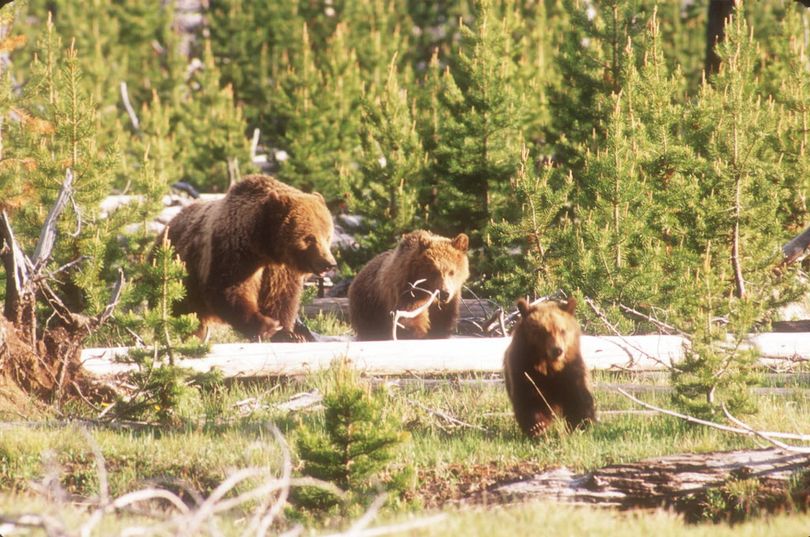Report: Hikers share responsibility for grizzly attacks

BEAR ATTACKS -- Investigations into fatal grizzly bear attacks around Yellowstone National Park suggest that hikers need to be better educated on avoiding and dealing with bear attacks.
The killing of a Montana man by a Yellowstone National Park grizzly bear highlights the need for hikers in the region to travel in groups, carry Mace-like bear spray and take other precautions against attacks, investigators said last week.
Here's more from the Associated Press:
A 260-pound grizzly killed Lance Crosby, 63, in August as the Billings man hiked alone and off-trail in a popular area of the park known as Elephant Back Mountain.
Crosby’s body was partially-eaten and buried. The female bear later was captured and euthanized and its two cubs placed into an Ohio zoo.
The attack marked the sixth fatal grizzly bear mauling since 2010 in the Yellowstone region of Wyoming, Montana and Idaho.
Five of the victims were hikers, including four who were alone, according to a multi-agency review board that investigated Crosby’s death. None of the hikers carried canisters of bear spray, which can stop a charging bear.
“All of the agencies work really hard to get information out to people about how to be safe in bear country. The majority of people don’t listen,” said review board chair Chris Servheen, the grizzly bear recovery coordinator for the U.S. Fish and Wildlife Service.
Yellowstone received 4.1 million visits last year, the highest number on record.
Roughly 700 to 1,000 grizzlies live in and around the park. State officials want to allow hunts of the federally-protected animals in part to address increasingly frequent conflicts with people.
Since the 2011 mauling of a California man, park officials have attempted to step up bear safety education efforts.
In addition to new signs at trailheads that warn of the dangers of grizzlies, a park concessionaire recently began renting canisters of bear spray for $9.25 a day. That compares to a purchase price of about $50.
Yet surveys show most visitors aren’t complying with recommended safety practices, said Yellowstone bear management biologist Kerry Gunther
Fewer than 14 percent of almost 8,800 visitors surveyed carried bear spray, and 60 percent hiked in party sizes smaller than the recommended minimum of three people.
Other recommended precautions include being vigilant, making noise, and not running from a bear during an encounter. The safety measures should be practiced in combination, officials said.
“You can’t hike in a group and then not carry bear spray, or if you carry bear spray that doesn’t make you immune. It’s not brains in a can,” Servheen said.
